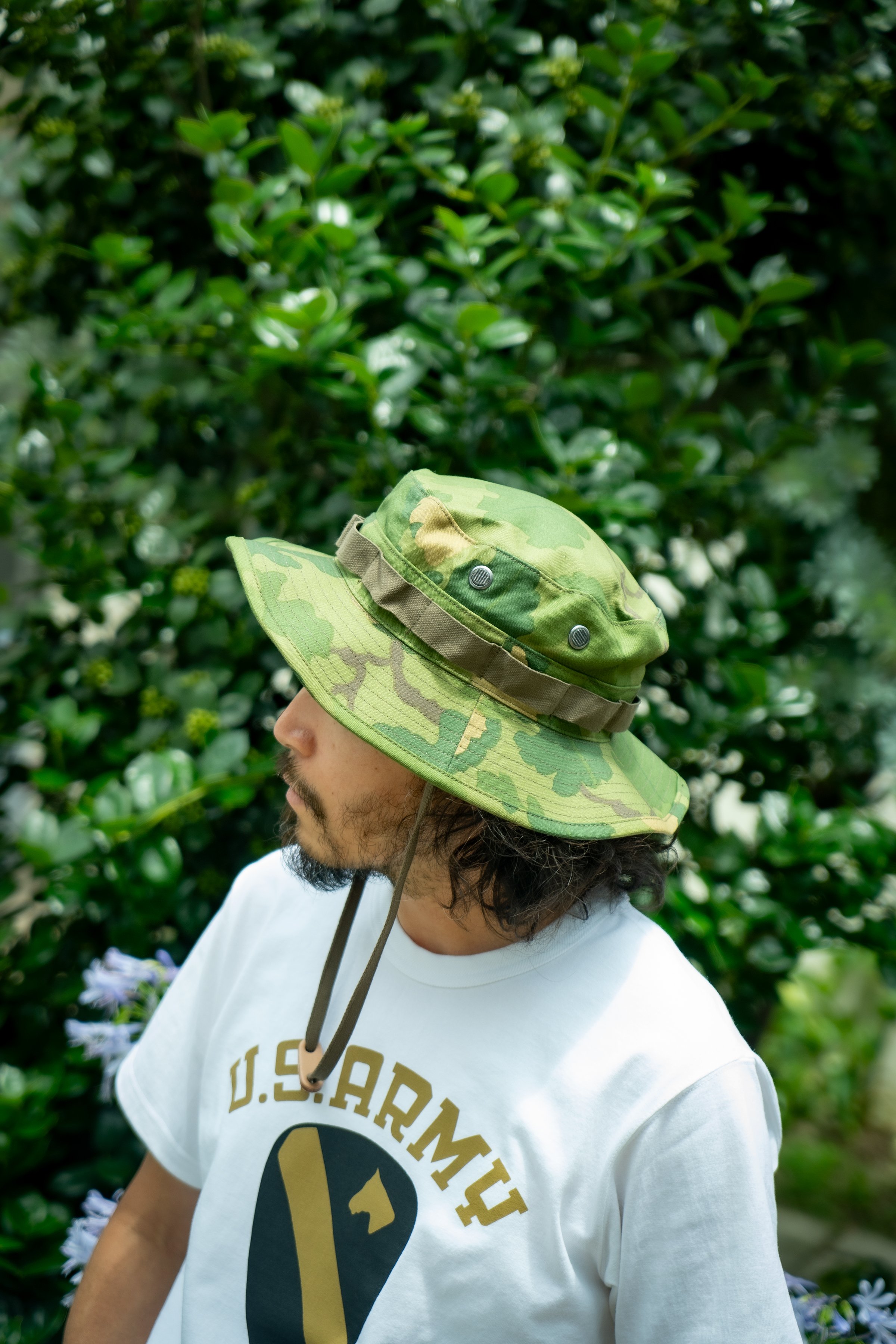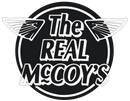
SALEABLE ITEM TAG
Price€190£160.00 WITH TAXES & DUTY PAID
Price£160.00
NameCAMOUFLAGE BOONIE HAT / MITCHELL PATTERN
RemarksThe Real McCoy's MA23004
About
The CAMOUFLAGE BOONIE HAT / MITCHELL PATTERN is a civilian concept of the Vietnam War era ‘Hat, Jungle’ - also known as the Boonie hat - in Mitchell Camo Printed Cotton Sateen.
Throughout the Vietnam war a number of trial garments were made and tested in Mitchell camouflage, including the M-65 though none of those garments were widely issued and shelter halves and helmet covers remained the only official designation. The camouflage was popular though and local tailors, particularly those in Okinawa would make custom pieces including shirts, pants, jackets and Boonie hats, as reimagined here.
The origin of the boonie hat can be traced back to fisherman's "bucket hats," constructed of wool or tweed. By the late 1930s, the U.S. military had adopted a wide-brimmed design, inspired by bucket hats in the form of the Denim Army Hat, better known as the Daisy Mae and later in Olive Drab HBT as part of the P41 Uniform.
The design remained mostly unchanged until the U.S. military officially issued what became known as boonie hats in 1967, designating them as "hat, jungle, with insect net.". The Viet Cong had a very effective wide-brimmed hat of their own which likely encouraged R&D by the U.S.. It was at this time the construction of the hat was refined to include screened vent holes, drawstring, and foliage ring - a tape/band encircling the base of the hat, purposed for attaching foliage as a means of camouflage.
Special forces like the MACV-SOG and Long Range Reconnaissance Patrols adopted the hat, personalizing it with slogans and insignia, as they famously did with Mitchell Camo helmet covers.
Designed for hot and humid climates, the Boonie offers superior comfort and protection against rain and sun. The wide brim provides concealment, breaking up the wearer's silhouette. Modifications such as cutting the brim shorter or adding inside pockets for documents were common, reflecting the boonie's adaptability to various combat scenarios.
As the ‘Hat, Jungle’ was adopted by a broader range of servicemen, the nickname ‘Boonie’ took hold, likely derived from the Tagalog word for Mountain — "bundok,", as with the ‘Boondocker’ name for FIELD SHOES, N-1 that came into use around the same time.
Reversible Mitchell Camo
During WWII, the Marine Corps had experimented with battledress camouflage using the M-42 Frog Skin design in an official capacity, while other U.S. troops — especially airborne pathfinder units landing in Normandy, camouflaged their uniforms with hand-painted splotches, stripes and foliage. But it was only after the end of the War, having seen its potential, that the US Military set out to develop a camouflage pattern for broader uniform use.
Between ‘48 and ‘53 field tests were conducted using a number of different patterns, culminating in a trial in Panama of 8 different designs. Two complimentary patterns were found particularly effective, the green hued Wine Leaf, a bright foliage pattern ideal for Spring and Summer months and The Mitchell, a brown cloudy pattern ideal for Fall and Winter that was named for its designer, an artist and former marine Meldon Mitchell. It was determined that this combination could be implemented in an interchangeable two-sided design that was designated as Pattern-53. Ultimately, the Mitchell name became synonymous with both sides and the Leaf design is recognized by that moniker today.

- Camouflage Printed Cotton Sateen
- Cotton Sewing Thread Construction
- Made in Japan






